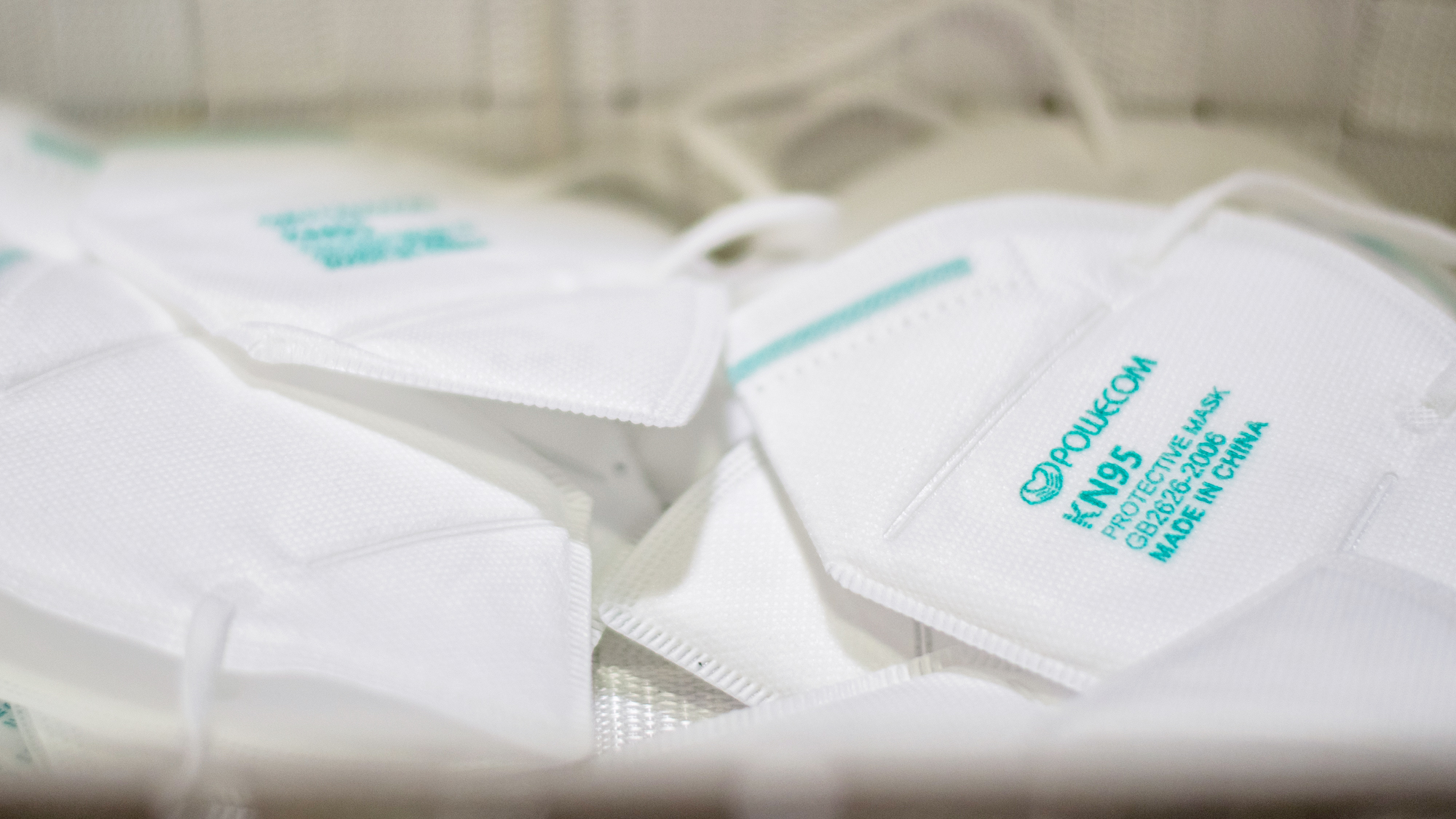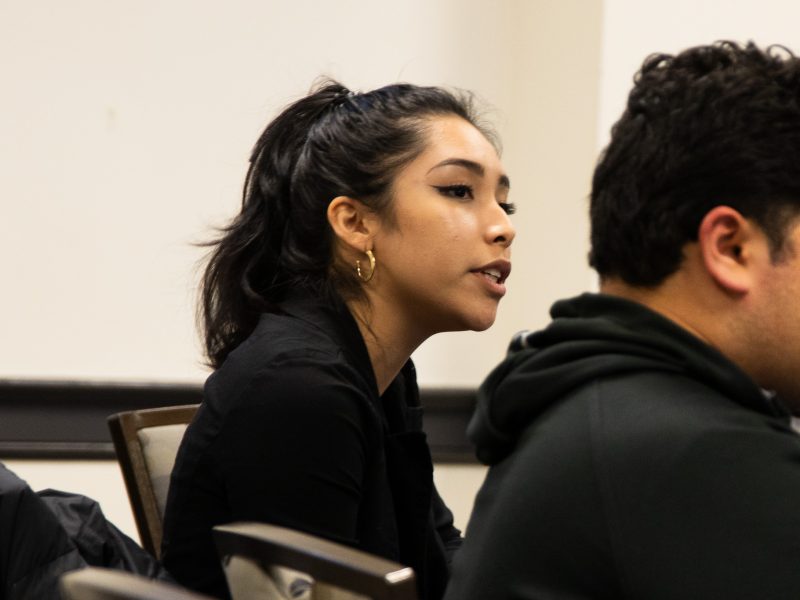A basket of new KN95 masks rests by the employees at the front desk of University of Maryland Stamp Student Union. Christina Alemayehu, a guest services assistant at Stamp, says the masks are the main thing people ask about at the front desk.
“It’s like every single person that comes to the desk is asking for a mask,” the senior communication major said.
The university began distributing roughly 50,000 masks on Sept. 20 – one per student – throughout the campus with the expectation that all unvaccinated community members wear the masks indoors and outdoors in crowded spaces. Fully vaccinated students were recommended to wear them in large groups and indoor spaces, such as classrooms and dorms, according to a university news release.
Despite university recommendations and the high traffic at Stamp’s service desk, Alemayehu said she doesn’t see a lot of people wearing KN95 masks. The difference, she said, may be because students want free stuff.
“I think it’s just for the sake of ‘OK, let me get one,’” Alemayehu said.
Freshman business student Erik Geibler said he grabbed a KN95 mask from Cumberland Hall’s service desk, but he doesn’t wear it consistently. Not wearing the mask isn’t a conscious choice, Geibler said, but rather he is usually just, “grabbing the first mask I see in my room in the morning.”
[UMD students weigh in on mask compliance this semester]
Geibler added since each student is only allowed to have one KN95 mask, it’s not efficient or comfortable to wear the KN95 day in and day out.
“After maybe three days, you might get [the KN95 mask] dirty or something like that and then they’re out, but disposable masks, you get like a million of them in a little pack,” Geibler said.
However, Kaitlyn McGuire, a senior biology major and community assistant at a South Campus Commons service desk, said she thinks the low number of students wearing a KN95 mask has more to do with the university’s advertising of the initiative.
The university emailed students on Sept. 17 to make them aware of the KN95 mask distribution details as well as other COVID-19 information. McGuire said many students looked at that as, “yet another email that I don’t want to read.”
“Don’t send me an email that’s like seven paragraphs long and make me read it. Give me a … cute little poster. Simple. Basic. People look at it, immediately know what they’re looking at,” McGuire said.
[DOTS still advises shuttle drivers to admit riders without masks. Some drivers are upset.]
Other students, such as junior hearing and speech sciences major Gianna Zappulla, said the initiative to get students to wear KN95 masks may be failing due to weak marketing and timing.
Zappulla said she doesn’t see many students wearing KN95 masks around the campus, but she does see many students wearing the university’s mass distributed “Terrapin Strong” mask from the 2020-2021 school year.
The timing of the “Terrapin Strong” mask distribution, which happened as students were moving into their dorms, was smarter than that of the KN95 masks, Zappulla said.
Being a few weeks into the semester, Zappulla also said “people are kind of stuck in their ways now.” Students don’t want to switch to the KN95 mask, which Zappulla said is harder to breathe in.
The university will re-order the KN95 masks two or three more times before the end of the semester, according to university President Darryll Pines. But that may not get more students to wear the masks. If people knew more of the science behind the masks, Alemayehu said, that would help to have students and faculty wear them more.
“You would think it’s common sense, but based off the condition of our world, you can assume a lot of people don’t work out of common sense,” Alemayehu said.



